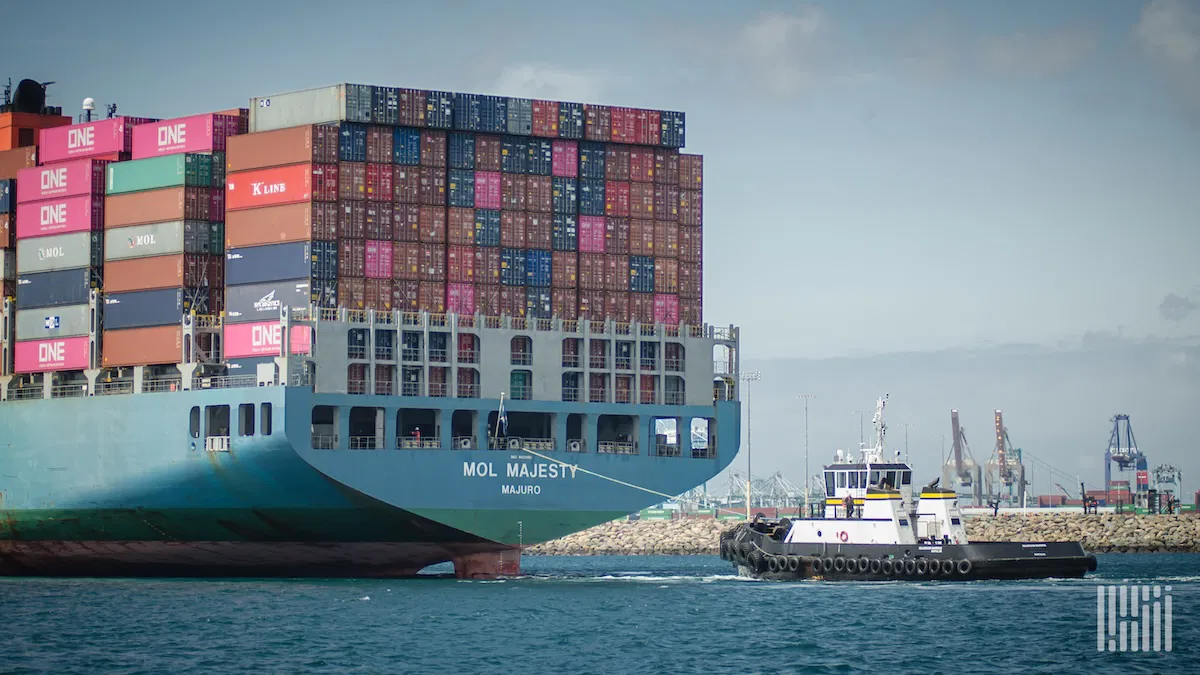Etelä-Kalifornian tuontitrendien vaikutukset
Los Angelesin sataman tuontimäärien vaihtelut voivat olla huolestuttava merkki kaupan dynamiikan suhteen, erityisesti ilman uutta kauppasopimusta Kiinan kanssa. Viimeisimmät tilastot osoittavat, että vaikka tullimaksut ovat väliaikaisesti keskeytyneet, Yhdysvaltoihin suuntautuvat lähetykset ovat edelleen samalla tasolla kuin viime vuonna.
Tuoretta dataa Los Angelesin satamasta
Los Angelesin satama, jota pidetään usein yleisen taloudellisen tilanteen barometrina, raportoi kokonaisläpimäärän vähenemistä 717 000:een 20 jalan pituiseen vakiokonttiin (TEU) toukokuussa – laskua 51 % verrattuna samaan kuukauteen edellisenä vuonna. Tämä merkitsee lupaavan kymmenen kuukauden kasvujakson päättymistä.
Tuonnin määrässä havaittiin huomattava 9% lasku viime vuoden lukuihin verrattuna, jota pahensi jyrkkä 19% pudotus verrattuna huhtikuuhun ennen tullimaksujen keskeytystä. "Saapuva lasti oli 356 020 TEU:ta, mikä on noin 25% vähemmän kuin huhtikuun alussa tekemämme arviot", kommentoi Gene Seroka, sataman toimitusjohtaja.
Vientitrendit ja taloudelliset näkymät
Vienti koki myös laskevan trendin, yhteensä 120 000 TEU:ta – laskua 5% edellisvuodesta, mikä on jo kuudes peräkkäinen kuukausi, jolloin laskua on tapahtunut.
Seroka ilmaisi optimismia Yhdysvaltojen ja Kiinan välisten meneillään olevien keskustelujen suhteen, korostaen erityisesti Lontoossa käytyjä viimeaikaisia neuvotteluja. Hän kuitenkin huomautti, että "tariffit ovat edelleen korkealla" säilyttäen huomattavan 55 %:n tullin kiinalaiselle tuonnille Yhdysvaltoihin. Lisäksi Kiinan vastatoimitariffit, joiden keskiarvo on noin 10 %, lisäävät kauppaympäristön vallitsevaa epävarmuutta.
Kuluttajien kulutus ja talouden kerrannaisvaikutus
SONAR-datan perusteella rahdinkuljettajat hyödyntävät tariffien taukoa, sillä Kiinan satamista Yhdysvaltoihin suuntautuvien konttien määrät pysyvät vakaina verrattuna viime vuoteen. Kuluttajien kiristäessä kulutustottumuksiaan – minkä National Retail Federationin raportti vahvistaa kokonaisvähittäismyynnin laskuna toukokuussa – laajempi taloudellinen tilanne on kuitenkin edelleen epävakaa.
Yale Universityn Budget Labin ekonomisti Ernie Tedeschi valotti, miten tullit ovat vaikuttaneet kuluttajiin ja talouteen yleisesti. "Ehdotetut tullit voisivat nostaa keskimääräisen efektiivisen tullitariffin Yhdysvalloissa jopa 12 prosenttiyksikköä. Tämä muutos johtaisi arviolta 1,5 prosentin lisäykseen amerikkalaisten perheiden kustannuksissa, mikä käytännössä vähentäisi ostovoimaa jopa 1 2500 dollaria perhettä kohden vuoden 2024 dollareissa", Tedeschi totesi. Hän selvitti tarkemmin tullien regressiivistä luonnetta toteamalla, että alemman ja työväenluokan perheet kantavat suurimman osan taloudellisesta puristuksesta, kokien 2,5 prosentin vaikutuksen verrattuna vain 1 prosenttiin tulospektrin huipulla oleville.
Inflaatiopaineet ja pitkän aikavälin taloudelliset vaikutukset
Kun Tedeschi keskusteli tullien inflaatiovaikutuksista, hän mainitsi, että vaikutusten näkyminen virallisissa tiedoissa kestää usein aikaa. Hän otti esimerkiksi vuoden 2018 tuontipyykinpesukoneiden tullit ja selitti, että kuluttajahinnoissa alkoi näkyä merkittäviä muutoksia vasta noin kolmen kuukauden kuluttua. Nykyinen tilanne, jolle on ominaista vaihtelevat varastotasot ja ennakoimattomat poliittiset tulokset, viittaa asteittaiseen mutta jatkuvaan vaikutukseen inflaatiovauhtiin.
Näistä haasteista huolimatta tulevien satamatoimintojen suhteen oli joitain rohkaisevia uutisia. National Retail Federationin satamaseurannan viimeaikaiset ennusteet ennakoivat tuonnin laskua kesä-, heinä- ja elokuussa. Vaikka tämä saattaa viitata varovaiseen lähestymistapaan tulevaisuudessa, Seroka on edelleen toiveikas sataman infrastruktuurin valmiuksien suhteen. "Nopeustilastomme ovat vankat", hän vakuutti, mikä osoittaa, että satama on valmis hallitsemaan tehokkaasti vaihtelevia rahtimääriä.
Johtopäätös ja seuraavat vaiheet logistiikkastrategioille
Logistiikka- ja kuljetusalan pyrkiessä jatkuvasti navigoimaan näissä epävarmassa vesissä, kauppasopimusten kehityksellä on kiistatta heijastusvaikutuksia globaaliin logistiikkaan. Pienetkin viivästykset voivat monimutkaistaa toimitusketjuja, mikä johtaa tarpeeseen tehdä älykkäitä muutoksia logistiikkastrategioissa. Sekä tuojien että viejien on oltava valppaita ja mukautumiskykyisiä.
GetTransport.comin kautta yritykset voivat varmistaa tehokkaat ja edulliset logistiikkaratkaisut, jotka on räätälöity heidän tarpeisiinsa. Toimistojen siirroista suurikokoisten tavaroiden lähetyksiin, alusta toimii monipuolisena kumppanina rahtikuljetuksissa, mikä takaa yksinkertaisen ja läpinäkyvän prosessin. Olipa kyseessä pienten lähetysten tai suurten konttikuljetusten hallinta, GetTransport.com virtaviivaistaa logistiikkaa ja tarjoaa kustannustehokkaan tavan navigoida näissä myrskyisissä kaupankäynnin vesissä.
Ovelaa lähestymistapaa seuraaviin rahtikuljetustarpeisiisi varten, harkitse GetTransport.com-sivustolla saatavilla olevia monipuolisia vaihtoehtoja. Varmista, että logistiikkasuunnitelmasi ovat parhaissa käsissä ja pysy ajan tasalla kaikista alati kehittyvän alan kehityksestä. Varaa nyt GetTransport.com.

 Tutkitaan, miten kauppasopimusten epävarmuus vaikuttaa tuontiin ja logistiikkatoimintoihin.">
Tutkitaan, miten kauppasopimusten epävarmuus vaikuttaa tuontiin ja logistiikkatoimintoihin.">